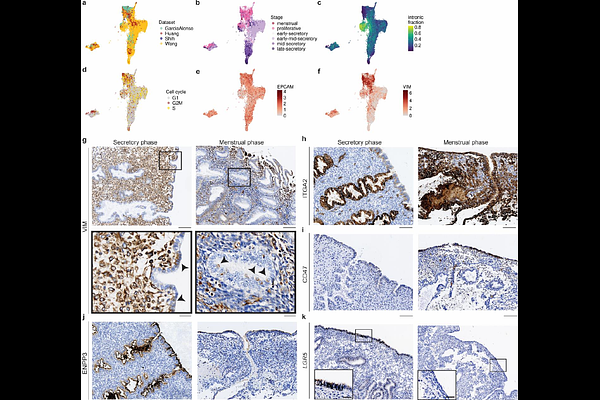An organoid model of the menstrual cycle reveals the role of the luminal epithelium in regeneration of the human endometrium

An organoid model of the menstrual cycle reveals the role of the luminal epithelium in regeneration of the human endometrium
Nikolakopoulou, K.; Ybanez, W.; Klaeyle, L.; Frugoli, L.; Hotz, H.-R.; Soneson, C.; Turco, M. Y.
AbstractMenstruation is an unusual physiological process whereby the human endometrium undergoes cyclical shedding yet scarless regeneration. Despite its pivotal role in reproductive health, the cellular states and interactions that coordinate this process are incompletely defined. Here, we establish an in vitro menstrual cycle (IVMC) protocol using human endometrial organoids that faithfully recapitulates the epithelium across the key phases of the menstrual cycle including differentiation, hormonal withdrawal, breakdown and regeneration. This IVMC protocol enables intricate study of the early phases of the cycle, which remain difficult to access in vivo. Using this system, we define transcriptional transitions in ciliated and non-ciliated epithelial cells during regeneration, revealing immediate stress-responsive states followed by wound-responsive ones that precede proliferation. We demonstrate that, in response to breakdown, organoids acquire a transcriptomic signature resembling the in vivo luminal epithelium in the menstrual and proliferative phases of the cycle. Luminal epithelial cells are crucial for this re-epithelialization and express factors such as WNT7A which we show to be required for long-term epithelial maintenance. Moreover, cell cell communication analyses identify luminal epithelium as a signaling hub, interacting with endothelial and immune cells via pathways including CXCL8, consistent with promotion of angiogenesis and immune recruitment during the regenerative window. Taken together, our study establishes a physiologically relevant paradigm to dissect epithelial renewal and cell-cell interactions during menstruation with potential to extend towards modelling common and distressing conditions such as menstrual disorders and endometriosis.